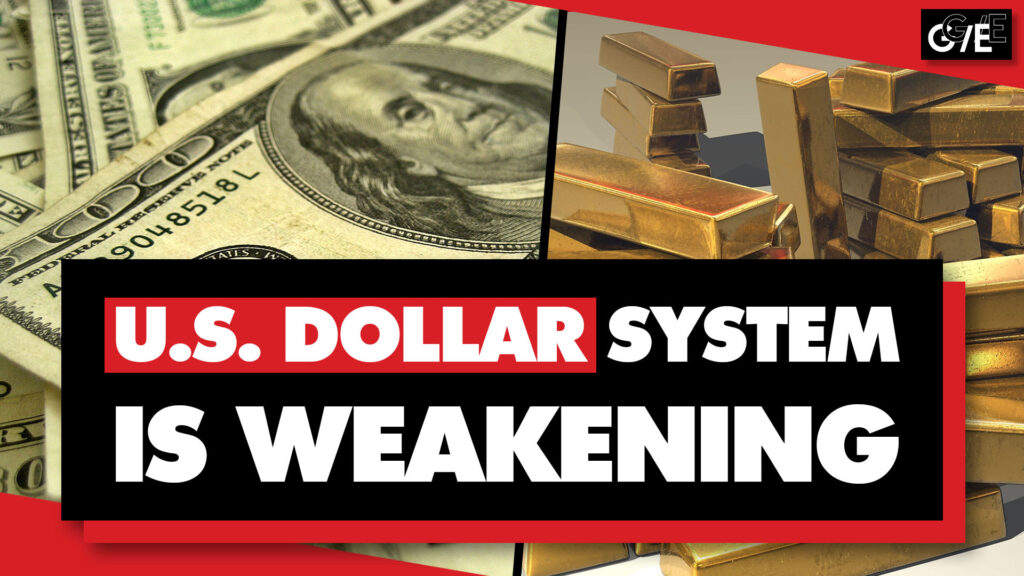An increasing number of countries around the world, particularly in the Global South, are seeking alternatives to US dollar-dominated financial systems as part of an international movement known as de-dollarization.
However, many Western media and experts argue that de-dollarization has gone too far.
One such naysayer is New York Times columnist Paul Krugman. He is a centrist economist who has won the so-called “Nobel Prize” in economics (in fact, this award is issued by Sweden’s conservative central bank).
In a 2023 paper, Krugman claimed to “debunk” critics of the dollar system, arguing that “all the hype about de-dollarization is a lot of fuss about almost nothing.”
This story is echoed by media outlets like Business Insider, which claimed that “the dollar’s dominance isn’t going anywhere.” Or Foreign Policy magazine invited the head of the Goldman Sachs Global Institute to argue that there is “no true global alternative” to the dollar system.
Nevertheless, cracks are beginning to appear in this elite consensus. Mohamed El-Erian, a mainstream American economist and former vice president of the US-controlled International Monetary Fund (IMF), warned that de-dollarization is indeed happening.
In a column for the Financial Times, El-Erian wrote that the dollar’s dominance is gradually eroding as foreign central banks cut back on their purchases of Treasury securities and instead hold more gold in reserves. I admitted something.
El-Erian is by no means an outsider to the Western neoliberal system. In fact, President Barack Obama previously appointed him chairman of the U.S. Council for World Development, and he is currently president of the prestigious Queen’s College, Cambridge University.
In this op-ed for the FT, El-Erian urged his colleagues to be a little more cautious and to look away from the dogmatic sands of neoclassical economic orthodoxy.
The price of gold “seems to be disconnected from traditional historical forces such as interest rates, inflation and the dollar,” El-Erian said.
Given that gold is an inflation hedge, the price of gold tends to be positively correlated with inflation. However, as inflation has declined over the past year, gold has risen 40% in the past 12 months to an all-time high.
One of the main reasons for this is that central banks in many Global South countries, particularly China and what El-Erian calls “middle power” countries united in and around the BRICS, have large You’re buying gold.
El-Erian said that a growing number of countries are looking to “gradually diversify their foreign exchange reserve holdings from the dollar’s significant dominance, despite US ‘economic exceptionalism.'” “We are interested in exploring potential alternatives to dollar-based payment systems.” It has played a central role in international architecture for about 80 years. ”
Why is this happening? El-Erian says it’s due to “a shift toward the rules-based, cooperative, multilateral system that the United States played a pivotal role in designing 80 years ago. This was due to a decline in interest and the weaponization of trade tariffs and investment sanctions.”
He also said that because of Washington’s staunch support for Israel in its genocidal war in the Gaza Strip, invasion of Lebanon, and attacks on other countries in West Asia, many countries are calling the United States “both fundamental and human rights.” He lamented that he viewed him as an “inconsistent supporter.” Application of International Law”.
There’s also the fact that North America and Europe have seized hundreds of billions of dollars worth of assets from Russia’s (and Iran, Venezuela, Syria, Afghanistan, and North Korea) reserves. Many countries now fear they may become the next victims.
Although Mr. El-Erian did not explicitly state this, it was understood from the context of the statement.
Another word conspicuously absent from El-Erian’s article is BRICS. But he was clearly hinting at it. It is noteworthy that his column was published in the week that Russia hosted the historic BRICS summit in the city of Kazan.
The geopolitical and economic report details BRICS’ plans to create a “multi-currency system” to counter the dominance of the US dollar.
In an op-ed for the Financial Times, El-Erian obliquely acknowledged that the economic war waged by North America and Europe against Russia had failed.
After Western countries cut off Russian financial institutions from the Swift interbank messaging system, the Russian government created “a clunky trade and payment alternative system involving a small number of other countries,” which allowed “Russia to avoid the dollar.” “We are now able to maintain our trade system by doing so,” El-Erian pointed out. The core of international economic and financial relations. ”
He warned that “an increasing number of small pipes are being built to bypass this (US dollar) core.” And this “risks effectively fragmenting the world system and undermining the international influence of the dollar and the U.S. financial system.”
Another important element not included in Mr. El-Erian’s (admittedly short) article was the U.S. Treasury market.
The percentage of U.S. Treasuries held by foreign investors peaked at about 34% in 2015, but has steadily declined over the past decade to 23% to 24% in 2024.
Meanwhile, the U.S. federal debt-to-GDP ratio exceeds 120% and continues to rise, and the annual deficit exceeds 6% of GDP.
Donald Trump and Kamala Harris will only continue this trend.
Demand for ever-increasing U.S. debt is simply decreasing (even as investors in Europe, the U.K., Canada, Taiwan, and India are helping the U.S. government try to keep yields within manageable limits). regardless of).
At some point, the U.S. government will have to decide whether it is more important to keep consumer price inflation low or to keep Treasury yields low. After the Fed’s rate hikes in 2022-2023, interest payments on the U.S. federal debt will exceed its massive military budget.
Therefore, it is not only geopolitics that is driving de-dollarization, but also US monetary and fiscal policy.
This may partially explain why 10-year Treasury yields rose instead of falling when the Federal Reserve cut interest rates by 50 basis points in September. Demand for Treasury securities, especially overseas demand, is clearly not as strong as U.S. policymakers would like.
The move away from U.S. Treasuries is especially evident when looking at the People’s Bank of China’s reserves.
The Chinese government’s holdings in U.S. Treasury securities have been steadily declining since 2014, from more than $1.3 trillion to less than $800 billion in 2024.
That said, regardless of Mr. El-Erian’s omissions, the important thing is that this elite American economist admitted in an article in one of the world’s leading economic newspapers that many of the critics of the dollar system are right. .
The New York Times, Paul Krugman, and much of America’s media and academic elite may still be in denial, but some of their colleagues are beginning to wake up to the reality.
Meanwhile, state-backed Western media such as France 24 would like the world to believe that the BRICS countries have failed to reshape the global financial order, but in reality they are only just getting started.



